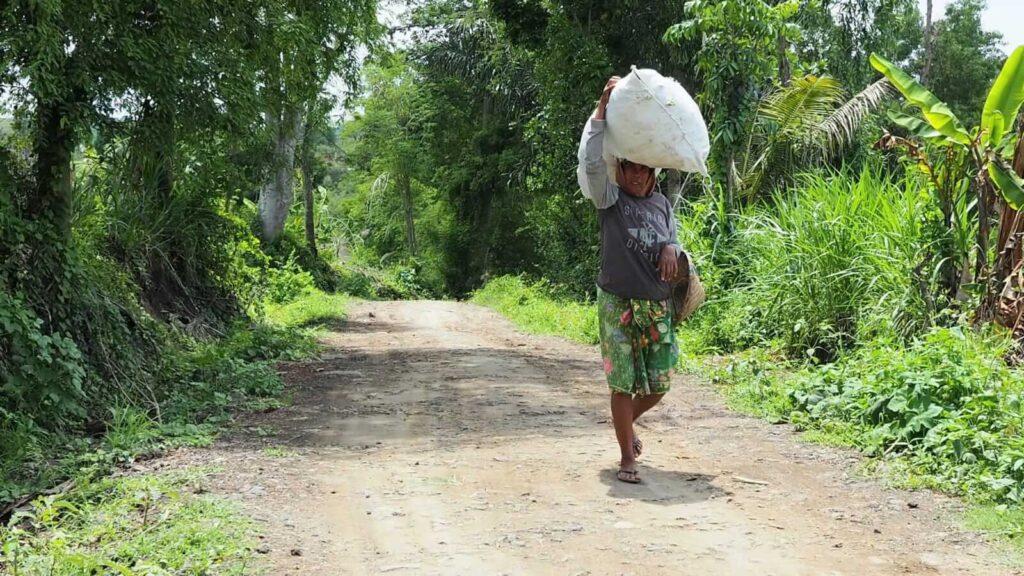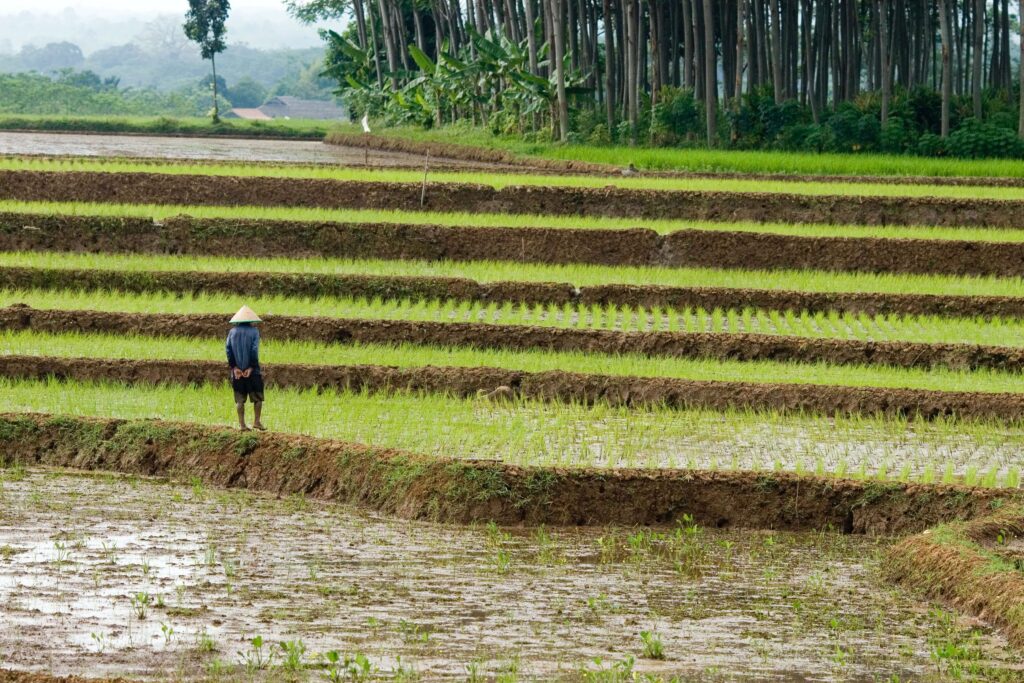One of the factors causing the decline in rice production is the high level of land conversion in Pesisir Selatan Regency. To overcome limited food farming land, the Department of Agriculture has made efforts to schedule rice planting up to three times a year with the aim of achieving a higher Planting Index (IP). In this context, one of the key requirements for increasing the IP of rice cultivation is ensuring water availability throughout the year. This land conversion can be considered a response to changing environmental conditions, which in turn can exacerbate problems such as drought due to climate change, affecting the availability of agricultural land.
Results of Identification of Seasons and Activities in the Community
From the Seasonal Calendar discussion, the following information/data was obtained:
The rainy seasons in Nagari Sungai Sariak Lumpo occur in March-April and October-November. It is during these months that farmers manage their rice fields, but there are also farmers who manage their fields in August. Rice planting is carried out in April and November, with planting carried out in December at the latest. In March, August and December farmers harvest their rice fields.
The dry season occurs in May-June. Apart from rice, farmers also grow corn and striped beans. Farmers will plant corn before the rainy season comes, namely in February, while they plant striped beans in May, when the dry season comes.
In the months of January-February, May and August-October, they (men) look for work or odd jobs outside their village. This is done when their rice fields experience drought and experience pest and disease attacks so that the rice harvest decreases.
Apart from rice farming, women also plant corn in February and striped beans/red beans in May, and men work as rubber cutters in gardens, both in their own gardens and in other people’s gardens. in the months January–April, and July–December.
Social activities, such as holding weddings and parties, are usually held after several days of Eid al-Fitr celebrations, namely in the months of March – May, and July – August. Furthermore, the community, generally men (children, young people) play kites, and even hold kite flying competitions which are often held after the rice harvest, around April, August and November, depending on the harvest season in each village in Nagari Sunagi Sariak Lumpo. Meanwhile, for religious celebrations such as the Prophet’s Birthday, the community will carry out the “Malamang” tradition, which is usually held in March-April. Apart from that, they make pilgrimages to family graves ahead of the Ramadan fast and the day after Eid al-Fitr.
The following is an identification with the Season Calendar in tabular form.
| Activities/Month | 1 | 2 | 3 | 4 | 5 | 6 | 7 | 8 | 9 | 10 | 11 | 12 |
|---|---|---|---|---|---|---|---|---|---|---|---|---|
| Rainy season | 🔵 | 🔵 | 🔵 | 🔵 | ||||||||
| Rice field management (plowing, seeding, planting) | 🔵 | 🔵 | 🔵 | 🔵 | 🔵 | |||||||
| Harvest season | 🔵 | 🔵 | 🔵 | |||||||||
| Drought | 🔵 | 🔵 | ||||||||||
| Plant corn | 🔵 | |||||||||||
| Striped beans | 🔵 | |||||||||||
| Work outside the village | 🔵 | 🔵 | 🔵 | 🔵 | 🔵 | 🔵 | ||||||
| Rubber stamping (Cutting/incising rubber) | 🔵 | 🔵 | 🔵 | 🔵 | 🔵 | 🔵 | 🔵 | 🔵 | 🔵 | 🔵 | ||
| Marry | 🔵 | 🔵 | 🔵 | 🔵 | 🔵 | |||||||
| Play kites | 🔵 | 🔵 | ||||||||||
| Visit the family grave | 🔵 | 🔵 | ||||||||||
| Maulud | 🔵 | |||||||||||
| Malamang* | 🔵 | 🔵 |
Threat/Hazard Assessment
Identify the types of threats/dangers that occurred in Nagari Sungai Sariak Lumpo in the last 10 years as follows:
- Flood
- Landslide
- Earthquake
- Drought
- COVID-19 pandemic
- Pest & disease attacks
The following is an analysis of the risk level from the aspects of consequences and possibilities for the types of threats/hazards in Nagari Sungai Sariak Lumpo:

Explanation:
Table. Risk level ranking for Nagari Sungai Sariak Lumpo, Kec. IV Jurai, Kab. South Coast
| Risk Level Rating | ||||
|---|---|---|---|---|
| Type of Threat/Danger | Likelihood/ Possible | Consequences/ Risk | Risk Level | Priority |
| Flood | Almost certainly (5) | Big (4) | Very High (20) | I |
| Landslide | Maybe (3) | Medium (3) | Intermediate (9) | III |
| Earthquake | Maybe (3) | Big (4) | High (12) | II |
| Drought | Almost certainly (5) | Big (4) | Very High (20) | I |
| COVID-19 pandemic | Less likely (2) | Big (4) | Intermediate (8) | IV |
| Pest & disease attacks | Almost certainly (5) | Big (4) | Very High (20) | I |
Referring to the risk level ranking table above, it can be concluded that:
- The three main types of threats/dangers that have occurred and will occur in Nagari Sungai Sariak Lumpo are floods, droughts and pest & disease attacks.
- The types of threats/dangers of floods and droughts & pest and disease attacks are in priority I because they have the same Likelihood/Possibility, Consequence/Impact and Risk Level values, namely Almost certain (5) – Likelihood/Possibility, Large (4) – Consequences/ Impact, Very High (20)-Risk Level.




